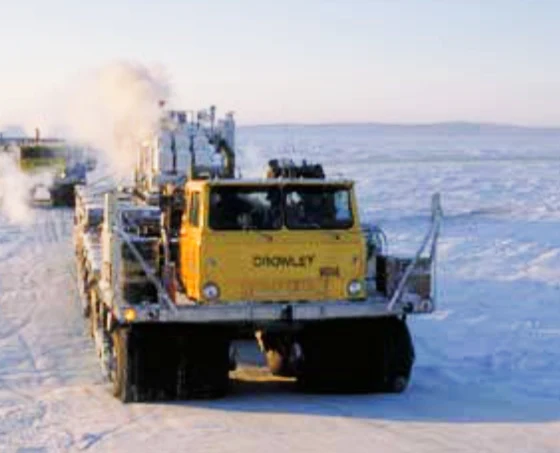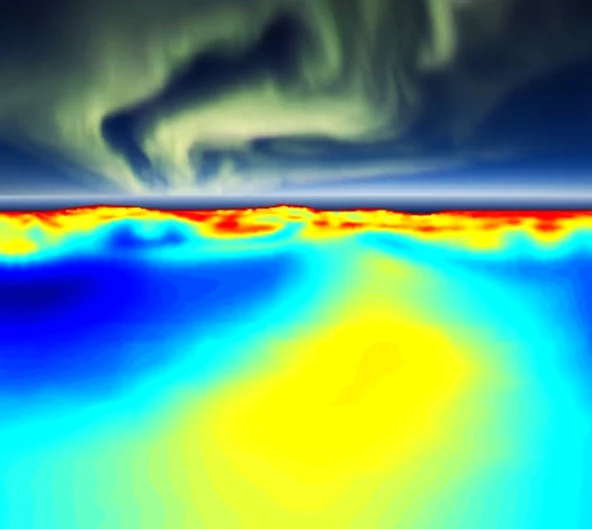Unveiling Earth's Secrets with Magnetotellurics (MT) Technology
Magnetotellurics (MT) Technology Specifications
| Feature | Description |
|---|---|
| Type | Passive Geophysical Method |
| Measurement | Natural variations in Earth's magnetic field and electric fields at the surface. |
| Source | Sun's interaction with Earth's magnetosphere (natural) |
| Data Acquisition | MT stations recording electric and magnetic fields over time. |
| Depth Penetration | Tens of meters to tens of kilometers |
| Advantages | * Quick and easy deployment * Non-invasive * Sees through seismic obstacles * Probes deep |
| Applications | * Mineral exploration * Hydrocarbon exploration * Geothermal exploration * Earthquake studies * Volcanic monitoring |
| Typical Deliverables | 3D or 2D maps of subsurface electrical conductivity |
| Sample Project | Geothermal Exploration (Identifying zones with high heat flow) |
Imagine a geophysical technique that utilizes Earth's natural electromagnetic hum to peer deep into its subsurface. This is the magic behind Magnetotellurics (MT), a powerful tool for geologists, geophysicists, and anyone interested in understanding the electrical conductivity of Earth's interior.
MT in Action
At its core, MT is a passive geophysical method. Unlike seismic surveys that use man-made vibrations, MT leverages natural variations in Earth's magnetic field. These variations, caused by the Sun's interaction with Earth's magnetosphere, induce tiny electric currents in the ground. By measuring these subtle electric and magnetic fields at the surface, MT unlocks valuable information about the electrical conductivity of Earth's rocks and fluids.
Advantages of MT
MT offers several advantages over other geophysical techniques:
- Quick and Easy Deployment: MT surveys are relatively quick to set up, making them ideal for challenging terrains or environmentally sensitive areas.
- Non-invasive: No need for drilling or explosives, making MT an environmentally friendly option.
- Seeing Through Seismic Obstacles: MT can image geological features hidden by basalt, salt layers, or other formations that block seismic waves.
- Probing Deep: MT surveys can reveal subsurface electrical conductivity variations from tens of meters to tens of kilometers deep.
Applications of MT
MT's ability to map electrical conductivity makes it valuable in various applications:
- Mineral Exploration: Identifying zones with high conductivity, potentially indicating the presence of metallic ores.
- Hydrocarbon Exploration: Mapping conductive brines associated with oil and gas reservoirs.
- Geothermal Exploration: Locating zones with high heat flow, potential targets for geothermal energy development.
- Earthquake Studies: Understanding the distribution of fluids in fault zones, which can influence earthquake behavior.
- Volcanic Monitoring: Tracking the movement of conductive fluids associated with volcanic activity.
Looking Beneath the Surface
By eavesdropping on Earth's natural electromagnetic whispers, MT technology offers a unique window into the hidden world beneath our feet. From mineral exploration to geothermal studies, MT continues to play a vital role in unraveling Earth's geological secrets.
Key Players in Magnetotellurics (MT) Technology
Magnetotellurics (MT) has become an essential tool for geoscientists, and several companies are at the forefront of developing and deploying this technology.
Key Players in Magnetotellurics (MT) Technology
| Company | Location | Products/Services | Focus Area | Website |
|---|---|---|---|---|
| KMS Technologies | Canada | MT instrumentation, data acquisition services (KMS-820 MT system, KMS-888 shallow borehole tool) | MT systems for various applications | https://www.kmstechnologies.com/ |
| Phoenix Geophysics | Canada | MT surveys, data processing | Mineral exploration, geothermal studies | https://www.phoenixgeophysics.com/ |
| Geonics Limited | Canada | Geophysical instruments (Geode MT system) | User-friendly MT systems for diverse field conditions | https://www.geonics.com/ |
| Zonge International, Inc. | USA | Geophysical services (MT surveys included) | Mineral exploration, geothermal, hydrocarbon exploration | https://www.youtube.com/watch?v=GWEt1rhnbNo |
| Toshniwal Instruments Ltd. | India | Geophysical instruments (Magnetotelluric System) | Cost-effective MT systems for global market | https://www.toshniwal.net/home |
| Metron Instruments | USA | MT instrumentation (Metron MT systems) | Innovative, high-performance MT systems | https://www.metron-instruments.com/en/ (Note: Website might not be available yet) |
| Fugro | Netherlands | Integrated geoservices (MT surveys offered) | Comprehensive exploration & development solutions with MT integration | https://www.fugro.com/contact/locations/netherlands |
Here's a look at some of the key players:
Established Leaders:
- KMS Technologies (Canada): A leading provider of MT instrumentation and data acquisition services. They offer a range of MT systems known for their portability and reliability.
- Phoenix Geophysics (Canada): Renowned for their expertise in MT surveys and data processing. They offer a full suite of services from survey design to data interpretation for various applications like mineral exploration and geothermal studies.
- Geonics Limited (Canada): A well-established company specializing in geophysical instrumentation, including MT systems. Their instruments are known for their user-friendliness and adaptability to different field conditions.
- Zonge International, Inc. (USA): A major player in geophysical services, with a strong focus on MT surveys. They offer a comprehensive range of services for mineral exploration, geothermal, and hydrocarbon exploration projects.
- Toshniwal Instruments Ltd. (India): A leading manufacturer of geophysical instruments in India, including MT systems. They cater to a global market, offering cost-effective solutions for MT surveys.
Rising Stars:
- Metron Instruments (USA): A growing company specializing in innovative MT instrumentation. They focus on developing high-performance and user-friendly MT systems.
- Fugro (Netherlands): A multinational geoservices company that has incorporated MT into its service portfolio. They offer MT surveys as part of their integrated exploration and development solutions.
Factors to Consider When Choosing an MT Company
- Experience: Look for a company with a proven track record in MT surveys and a good understanding of your specific application.
- Equipment: Consider the type of MT system offered by the company and its suitability for your project requirements.
- Data Processing Expertise: Reliable data processing is crucial for accurate results. Choose a company with experienced professionals to interpret your MT data.
- Global Reach: Depending on your project location, a company's international presence might be a factor.
The Future of MT
As the demand for mineral resources, clean energy solutions, and disaster risk mitigation grows, MT technology is expected to play an increasingly vital role. We can expect to see continued advancements in MT instrumentation, data processing techniques, and integration with other geophysical methods. The key players mentioned above are likely to remain at the forefront of these developments, shaping the future of MT exploration.
Frequently Asked Questions About Magnetotellurics (MT) Technology
Magnetotellurics (MT) is a geophysical method used to study the electrical conductivity of the subsurface. It involves measuring the natural electromagnetic fields generated by the Earth and the ionosphere. Here are some common questions and answers about MT technology:
Basic Concepts
- What is MT?
- MT is a geophysical method that uses natural electromagnetic fields to study the electrical conductivity of the subsurface.
- How does MT work?
- MT involves measuring the horizontal and vertical components of the electric and magnetic fields at a given location. The ratio of these fields can be used to infer the electrical resistivity of the subsurface.
Applications of MT
- What are the main applications of MT?
- MT has a wide range of applications, including:
- Geothermal exploration: Identifying geothermal reservoirs.
- Mineral exploration: Locating mineral deposits.
- Hydrogeology: Mapping groundwater aquifers and contaminant plumes.
- Geotechnical engineering: Assessing subsurface conditions for construction projects.
- Geophysics: Studying the structure and dynamics of the Earth's crust.
- MT has a wide range of applications, including:
- How is MT used in geothermal exploration?
- MT can be used to identify geothermal reservoirs by detecting areas of high electrical conductivity, which are often associated with hot, fluid-filled rocks.
Challenges and Limitations
- What are the challenges of using MT?
- Challenges include:
- Noise: Noise from various sources, such as power lines and industrial activities, can interfere with MT measurements.
- Data interpretation: Interpreting MT data can be complex and requires specialized knowledge.
- Depth of penetration: MT is limited by its depth of penetration, which depends on the frequency of the electromagnetic fields and the electrical conductivity of the subsurface.
- Challenges include:
- What are the limitations of MT?
- MT is less effective in areas with low electrical conductivity, such as deserts and arid regions.
Future Directions
- What are the future directions of MT?
- Future directions include:
- Development of new data analysis techniques: Developing more advanced data analysis techniques for MT.
- Integration with other geophysical methods: Combining MT with other geophysical methods, such as seismic and electrical resistivity tomography.
- Automation: Developing automated MT systems to improve efficiency and reduce costs.
- Future directions include:


